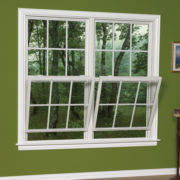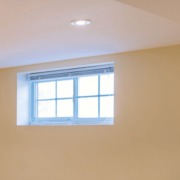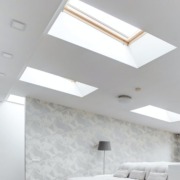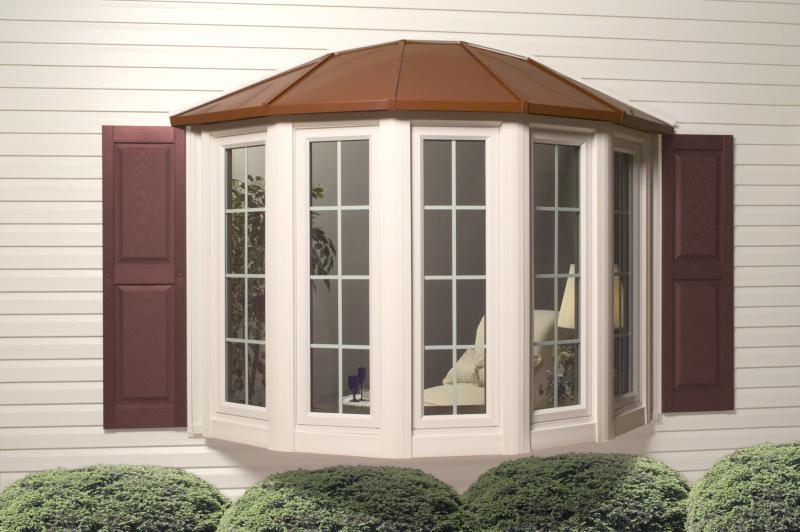Bay and Bow Windows: Transform Your Home with Stunning Views in New Castle County, Delaware
Bay and bow replacement windows are an impressive and elegant way to bring more natural light and space into your home. These windows are often seen as architectural focal points that can enhance both the interior and exterior of a property. With their unique designs and benefits, bay and bow windows can transform your living space. In this article, we will explore the advantages of bay and bow replacement windows, how they differ, and why they might be the ideal choice for your home in New Castle County, Delaware.
What Are Bay and Bow Windows?
Bay and bow windows are both designed to project outward from the exterior of your home, creating additional interior space and offering expansive views of the surrounding area. While they both feature a combination of windows arranged in a curved or angled configuration, there are key differences in their structure:
- Bay Windows: Typically consist of three windows—one large center window and two smaller windows on the sides, angled toward the wall. Bay windows tend to have a more angular shape, creating a sharp extension of the room.
- Bow Windows: Feature four or more windows arranged in a gentle, curved formation. This design creates a rounded appearance and allows for a wider, more panoramic view.
Both window types offer enhanced curb appeal, additional space, and more natural light than traditional flat windows.
Key Features of Bay and Bow Windows:
- Bay windows consist of three windows, with angled sides.
- Bow windows feature four or more windows in a curved formation.
- Both styles create extra space and offer better views and light.
For homeowners in New Castle County looking to add elegance, light, and space to their home, bay and bow windows are excellent choices.
Enhancing Your Home’s Aesthetic Appeal
Bay and bow windows are known for their stunning visual impact. These windows create a beautiful architectural feature that can instantly elevate the look of any room. Whether you’re aiming for a traditional, contemporary, or modern look, bay and bow windows fit seamlessly into a wide range of home styles. Their elegant curves and expansive glass areas also provide an opportunity to showcase decorative elements like window seats, plants, or custom treatments.
Aesthetic Advantages of Bay and Bow Windows:
- Add a striking architectural feature to both the interior and exterior of your home.
- Provide expansive views of your surroundings, bringing the outdoors inside.
- Can be customized to match your home’s style and décor.
For homeowners in New Castle County who want to make a bold design statement, bay and bow windows offer a visually stunning solution.
Bringing in More Natural Light
One of the standout benefits of bay and bow windows is their ability to flood your home with natural light. The large glass panes of these windows allow sunlight to pour into your space, brightening rooms and reducing the need for artificial lighting. Whether you’re in a living room, dining area, or even a bedroom, these windows help create an open, airy atmosphere that enhances your home’s comfort and ambiance.
How Bay and Bow Windows Improve Natural Light:
- The large glass panels maximize sunlight, reducing the need for artificial lighting.
- Bay windows allow for angled light that creates beautiful interior lighting effects.
- Bow windows, with their curved design, allow more sunlight to filter into the room from different angles.
For New Castle County homeowners seeking to brighten their homes with natural light, bay and bow windows are the perfect solution.
Creating More Space in Your Home
Both bay and bow windows extend outward, creating additional space inside the room. This added space can be used for a variety of purposes, such as adding a cozy window seat, setting up a reading nook, or simply making the room feel larger and more open. This is particularly beneficial in smaller rooms or homes with limited square footage, as bay and bow windows help maximize the available space.
Space-Enhancing Benefits:
- Create additional usable space in the room, perfect for seating or decor.
- Make small rooms feel larger by adding depth and dimension to the space.
- Great for creating a focal point or adding a cozy nook to your home.
If you’re looking to add space and functionality to a room in your New Castle County home, bay and bow windows are an excellent choice.
Improving Ventilation and Airflow
Bay and bow windows, when equipped with operable sashes, can provide excellent ventilation. The individual windows within the unit can be opened, allowing fresh air to flow into the room and enhancing the indoor air quality. This added airflow can be particularly beneficial in kitchens, living rooms, or bedrooms where natural ventilation is often desired.
Ventilation Advantages:
- Operable windows allow for fresh air circulation and improved airflow.
- Enhance indoor air quality by promoting natural ventilation.
- Great for rooms that need ventilation without sacrificing light or views.
Bay and bow windows are ideal for New Castle County homeowners who want to improve ventilation and enjoy fresh air while still benefiting from expansive views.
Energy Efficiency and Insulation
Modern bay and bow windows come with energy-efficient features that can help improve your home’s insulation. With high-performance glass options, such as Low-E coatings, these windows reduce heat transfer and improve the overall energy efficiency of your home. This means your home will stay cooler in the summer and warmer in the winter, reducing the need for artificial heating and cooling and ultimately saving on energy costs.
Energy Efficiency Benefits:
- High-performance glass options reduce heat transfer and improve insulation.
- Energy-efficient framing materials, such as vinyl and fiberglass, enhance overall efficiency.
- Help reduce energy consumption and lower heating and cooling costs.
By selecting energy-efficient bay and bow windows, New Castle County homeowners can enhance their home’s comfort while saving on energy bills.
Durability and Longevity
Bay and bow windows are built to last, with durable frames and high-quality glass that stand up to the elements. Materials such as vinyl, fiberglass, and wood are commonly used for the window frames, offering superior strength and weather resistance. With proper maintenance, bay and bow windows can last for decades, continuing to provide beauty, functionality, and protection for your home.
Durability and Longevity Advantages:
- Constructed from durable, weather-resistant materials like vinyl and fiberglass.
- High-quality glass that resists cracking and fading over time.
- Designed to withstand various weather conditions, making them a long-lasting investment.
For homeowners in New Castle County looking for windows that provide lasting performance and durability, bay and bow windows are a solid investment.
Choosing the Right Bay or Bow Windows for Your Home
When choosing bay or bow windows, it’s important to consider factors such as the size of the room, the architectural style of your home, and your budget. Both types of windows come in a variety of materials and designs, which allows for customization to match your aesthetic preferences.
- Vinyl: Offers excellent energy efficiency and low maintenance.
- Wood: Provides a classic look with natural appeal, but requires more upkeep.
- Fiberglass: Known for its strength and energy efficiency, while requiring minimal maintenance.
By working with a professional replacement window company like American Craftsmen LLC, you can ensure that your bay or bow windows are properly selected and installed to maximize their beauty, efficiency, and longevity.
Conclusion
Bay and bow windows are a fantastic way to add beauty, light, and space to your home in New Castle County, Delaware. With their ability to enhance the architectural appeal, provide expansive views, and offer natural light, these windows can transform any room. Whether you’re looking to improve ventilation, increase energy efficiency, or simply make a stunning design statement, bay and bow windows are an excellent option.
If you’re ready to replace your bay or bow windows in your home, contact American Craftsmen LLC today. Our team will help you choose the perfect windows for your space and ensure expert installation, so you can enjoy all the benefits these beautiful windows have to offer!











